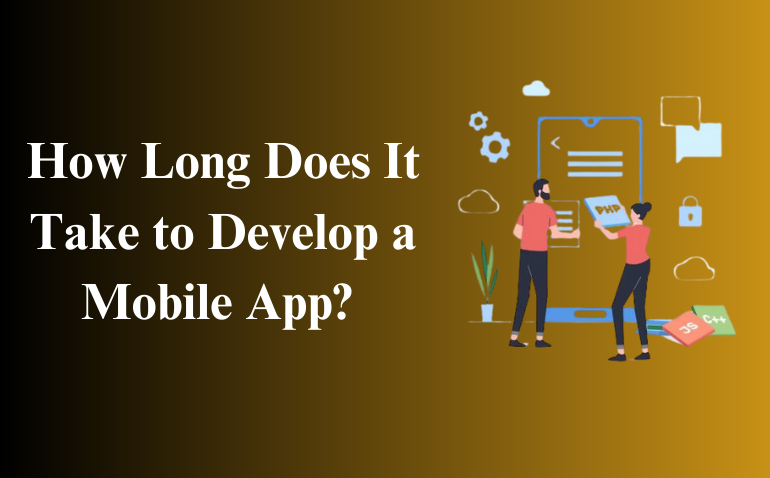Table of Contents
How Long Does It Take to Develop a Mobile App?
If you’ve ever thought about building your own mobile app, one of the first questions you probably had after “How much will it cost?” is: “How long will it take?” The answer is: it depends. The timeline for developing a mobile app can vary greatly depending on many factors. But to help you set expectations, here’s a breakdown of what influences app development time, and some rough time-estimates based on different kinds of projects.
What Affects the Time for Mobile App Development
Appinventiv outlines several key factors that impact app development timelines. Let’s look at them:
Platform
Whether you build your app for Android, iOS, or both has a big impact. Android development often takes longer due to device fragmentation — many screen sizes, OS versions, hardware specs. iOS tends to be more uniform. So if you’re targeting both platforms, expect extra time.
Complexity of the App / Idea
- Complex: Custom graphic design, heavy animation, real-time features, offline mode, complex integrations (payments, maps, IoT), advanced security. The more unique or novel the features, the more time will be needed to design, test, debug, and polish.
- Simple: Basic functionality, little UI complexity (e.g., a single-purpose utility, simple data display) will be faster.
- Medium / Standard: More screens, user registration, backend services, integrations (APIs), some custom UI/UX.
Number & Kind of Features
Each new feature (login, push notifications, media upload, social sharing, GPS, etc.) adds work — not just coding, but design, backend work, testing. A small number of simple features can be built quickly; large, custom, or innovative features take more time. Also, deciding on building an MVP (Minimal Viable Product) first helps reduce time by postponing non-essential features.
Target Audience and Scale
If the app is meant for very few users (a pilot, or internal company app), it might require less work in terms of performance optimization, server-scaling, load testing, etc. But if you expect tens of thousands or millions of users, or global reach, then you’ll need to plan for scalable architecture, stress testing, localization, etc. That lengthens development.
Development Process / Methodology
How the team is organized, whether Agile or Waterfall or a hybrid, whether tasks are done in parallel (e.g. UI & backend simultaneously) or sequentially, whether there is a lot of iteration (e.g. many feedback cycles) — all these affect how long the project takes. Appinventiv mentions that using Agile and parallel modules helps reduce time.
Communication & Collaboration
Delays often happen not because of technical issues, but because of miscommunication, delayed decisions, unclear requirements, or lack of client feedback. If there is clarity from the start, and the client/developer maintain good ongoing communication, you save a lot of time.
Typical Time Estimates
While every project is different, here are rough timelines based on app complexity, using insights inspired by Appinventiv and other industry data:
| Kind of App | Estimated Time to Initial Launch (MVP / Basic Version) |
|---|---|
| Very Simple app (few screens, no backend, basic UI) | 4-8 weeks |
| Simple-medium app (user auth, backend, moderate UI/UX, some integrations) | 2-4 months |
| Medium-complex app (custom UI, real-time features, multiple integrations, both Android & iOS) | 4-6 months |
| Complex app (high security, real-time sync, offline mode, advanced animations, heavy backend, scale) | 6-9+ months |
| Very large / enterprise-grade / cutting-edge features (AI, AR/VR, IoT integration, etc.) | 9-12+ months (or more, depending on scale and maintenance) |
These are estimates for getting a working, usable version out into the market. Subsequent updates, iterations, bug fixes, feature additions will continue after launch.
What Helps Speed Things Up (Without Sacrificing Quality)
If you want to get your app ready faster, here are some strategies
- Define clear requirements up front: Know what features are essential vs optional. Clear scope helps avoid mid-project changes.
- Start with an MVP: Launch with the minimum viable product to test market response, get feedback, then iterate.
- Use cross-platform tools wisely: Sometimes frameworks like React Native, Flutter can help reduce duplicate work. But they have trade-offs.
- Design & prototyping early: Wireframes, mockups, prototypes help iron out UI/UX early so that developers don’t keep reworking things.
- Parallelize tasks: UI/UX design, backend setup, API development can often be done in parallel.
- Regular feedback & testing: Frequent check-ins, early testing (unit tests, user testing) help catch issues early when they’re cheaper to fix.
- Good project management & communication: Define timelines, milestones, and ensure both client and dev team are aligned
Wrapping Up - Developing a mobile app is not something that “just happens overnight.” It involves planning, designing, building, testing, iterating. The time it takes depends heavily on:
- what you want the app to do (complexity & features),
- for whom you are building it (scale, platform), and
- how you manage the process (team, communication, methodology).
- If you’re serious about building an app, it’s a good idea to map out your idea, define scope, budget for both time and cost, and maybe talk with a few app developers to get estimates. That way you’ll have a realistic timeline in mind.


